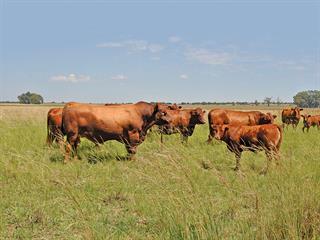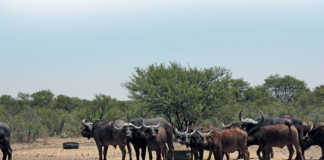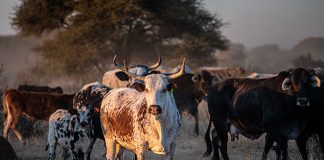
Research into, and acceptance of, crossbreeds is important for the sustainability and competitiveness of the South African livestock sector, says Prof Michiel Scholtz, head of the Vaalharts Crossbreeding Programme. The programme was established to demonstrate how genetic selection and crossbreeding can optimise economically important traits such as fertility, growth, efficiency, health and carcass characteristics in cattle.
Trends indicate that crossbreeding will become more widespread in many other developing countries in the southern hemisphere. The programme, now in its second year, is a joint initiative between the Agricultural Research Council’s Animal Production Institute, the Northern Cape Department of Agriculture, Land Reform and Rural Development, and the University of the Free State. Afrikaner, Angus, Bonsmara, Nguni and Simmentaler breeds are used.
Drivers of change
According to Scholtz, climate change and the increasing global demand for meat are the main reasons for developing crossbreeds. Variable temperatures, increasing frequencies of heat stress and drought will affect livestock productivity negatively.
“Global warming will have direct and indirect effects on livestock, which have to adapt to these climatic changes,” he explains.
Africa has been identified as one of the continents most affected by extreme weather changes.
“No single pure cattle breed excels in all aspects of profitability. Nor is one breed the best in all environments. This is why it’s becoming crucial for cattlemen to utilise local landrace breeds better-adapted to hot climates,” says Scholtz.
Global demand for meat is expected to increase by more than 200%, from 229 million tons in 1999 to 465 million tons by 2050. To meet this demand, Scholtz explains, cattle farmers will need larger and more productive herds. This means they will have to change their approach to beef production, and crossbreeding is a viable alternative.
Room for improvement
According to Scholtz, crossbreeding is standard practice in many countries. It is also one of the oldest strategies used to reduce costs and enhance productivity. In countries such as the US, Canada and Australia, crossbreeding is becoming increasingly important in commercial beef production.
In South Africa, Scholtz’s research into beef cattle and the local feedlot industry shows that 67% of feedlot cattle are crossbred. Crossbreeding is therefore already playing a significant role in the commercial sector. However, he sees room for further growth. Only 5% of beef animals from subsistence farmers go through formal marketing channels. In contrast, as much as 80% of cattle from the commercial sector are finished in feedlots. The fact that cattle from the subsistence sector do not currently meet feedlot requirements is one of the many reasons for this difference.
“Feedlots require fast-growing, efficient producers of high-quality feed with superior carcass attributes,” explains Scholtz.
“Breeding indigenous cows to suitable sire lines may produce terminal calves better suited to commercial feedlot requirements.
“Research on several aspects of the communal and emerging sector has shown that this sector hasn’t reached its full potential. For example, off-take in the developing sector is between 7,5% and 10%, significantly lower than the estimated 25% in the commercial sector.”
Selecting superior traits
Crossbreeding is important in areas of South Africa where extensive cattle farming dominates beef production systems. Typically, most livestock production is on marginal land and veld.
According to Scholtz, a consistent and comprehensive crossbreeding programme in a beef herd can result in 26% greater productivity than that obtained by a traditional breeding programme. But achieving this requires careful management.
“Through crossbreeding, a cattleman can select traits of moderate to high heritability, such as growth rate and carcass traits.
Some of the most important traits related to beef production, such as reproduction rate and calf survival, are of low heritability.
This means the success of selection programmes for these traits is limited. But it can be improved more rapidly through crossbreeding.”
A well-structured crossbreeding system takes advantage of appropriate combinations of superior traits of different breeds, resulting in heterosis or hybrid vigour. Offspring exhibiting heterosis when combining the genetic contributions of parents enhance these traits.
Breeds that excel in maternal traits such as fertility, calving ease, milk production, maintenance efficiency and maternal ability are usually crossbred with paternal breeds with strong production qualities. These include feed conversion rate and efficiency, meat quality and carcass yield.
“Developing feedlots and providing market access for developing and communal cattlemen is a priority of the government’s comprehensive agricultural development programme. It makes economic sense to utilise crossbreeding to produce cattle suitable for these systems,” says Scholtz.
Email Prof Scholtz at [email protected].













